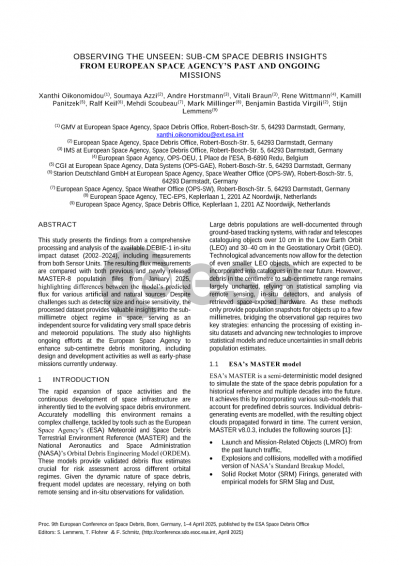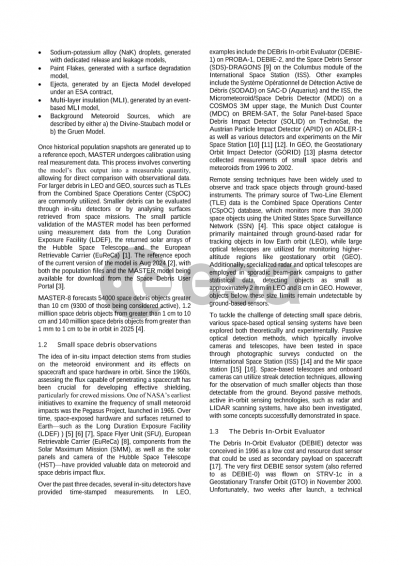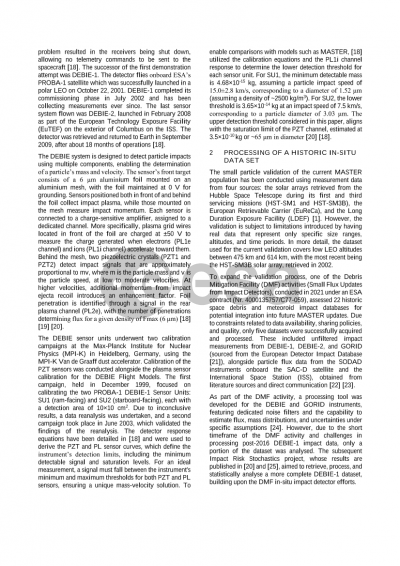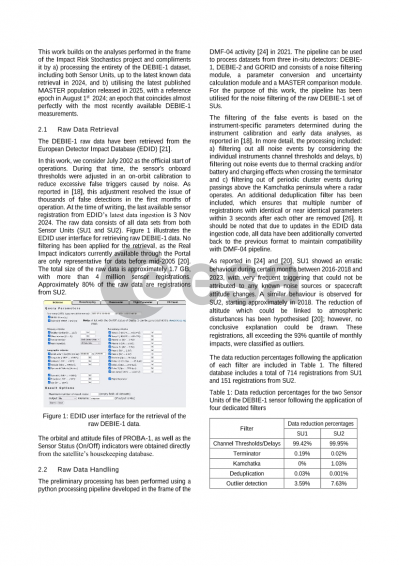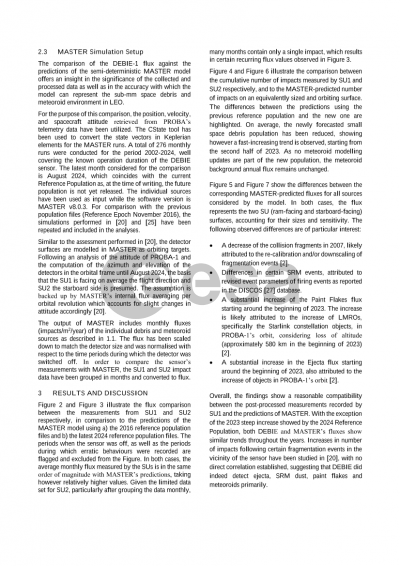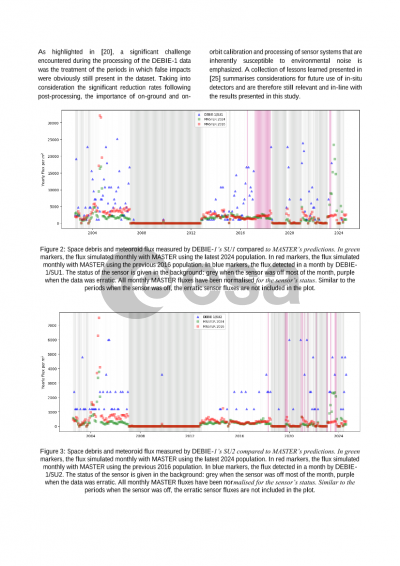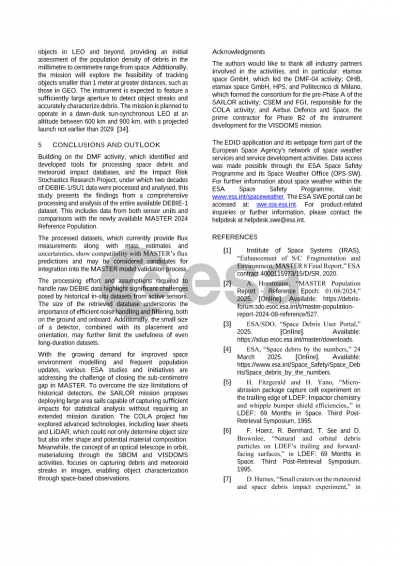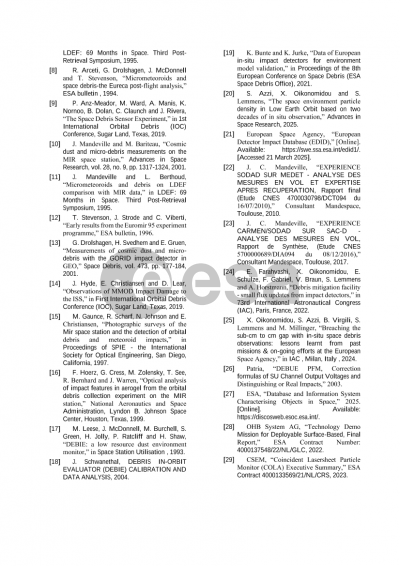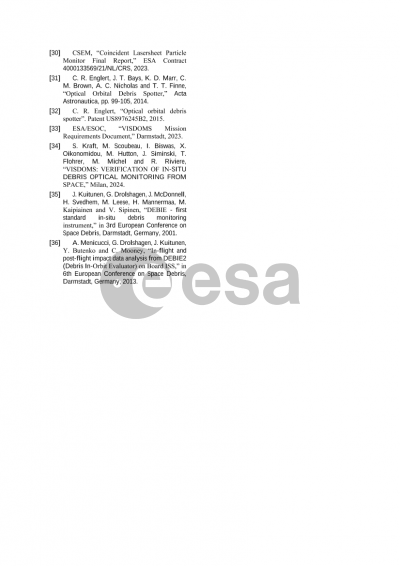Document details
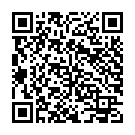
Abstract
With the growing number of satellites in orbit and the rising need to safeguard space assets, developing a comprehensive understanding and accurate modelling of the artificial space environment is increasingly critical. Tools like ESA’s Meteoroid and Space debris Terrestrial Environment Reference (MASTER) and NASA’s (Orbital Debris Engineering Model) ORDEM offer validated representations of the debris population, supporting spacecraft risk assessments and ensuring compliance with mitigation standards, including ESA’s Space Debris Mitigation guidelines and the “Zero Debris” policy.
Given the dynamic nature of the space debris environment, models must be regularly updated and validated with independent and up-to-date data. While catalogues track objects that can be routinely observed using ground-based telescopes and radar (typically representing debris larger than 10 cm in LEO and 30-40 cm in GEO), our understanding of smaller objects relies on statistical sampling through large remote sensing systems, in-situ detectors, or the retrieval of space-exposed hardware. Due to the limited number of large-scale remote sensing systems, strict data-sharing policies, and the challenges of returning space hardware to Earth, focus is put in processing existing datasets which have yet to be included in the validation chain of the MASTER model, as well as developing concepts and future missions that focus on collecting data from small debris in-situ.
Within this context, the entirety of measurements collected from the DEBIE-1 sensor between 2002 and 2024 has been post-processed and analysed. In the frame of the on-going MASTER validation activities and the frequent future population releases, the resulting measurements from the longest operating in-situ detector in space, comprising of flux as well as mass estimates and uncertainties, are assessed for their usability. In view of the acknowledged challenges posed by datasets from such active in-situ detectors – i.e. small detector size, need for sophisticated post-processing due to high noise sensitivity, limited size range sensitivity and orbital coverage – ESA is conducting studies on mission concepts designed to address the small debris data gap while incorporating the lessons learnt from the processing of historical datasets. Within this frame, currently on-going activities within ESA’s Space Safety Programme are summarised. In particular, the status of the Sail Array for Impact Logging in Orbit (SAILOR) mission, currently in phase A/B1, as well as the status of the Verification of In-Situ Debris Optical Monitoring from Space (VISDOMS) mission, currently in phase B/C are presented.
The study aims at summarising the findings from the processing of the entirety of the DEBIE-1 dataset and performing and assessment of its usability in the processing chain of the MASTER model and the new population releases. In addition, the status and updates of on-going activities related to small space debris observations at ESA in the sub-cm domain are presented.
Preview
